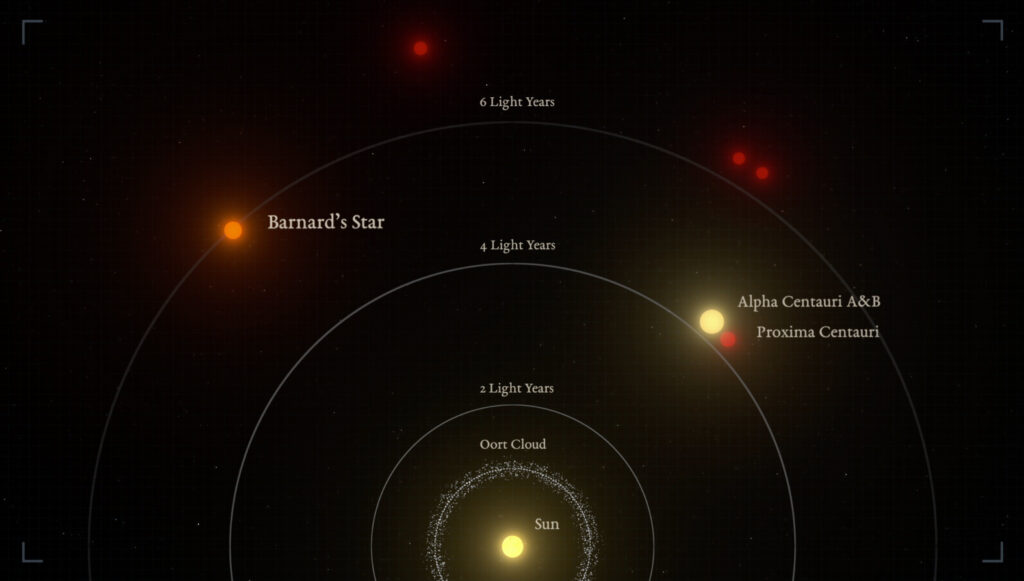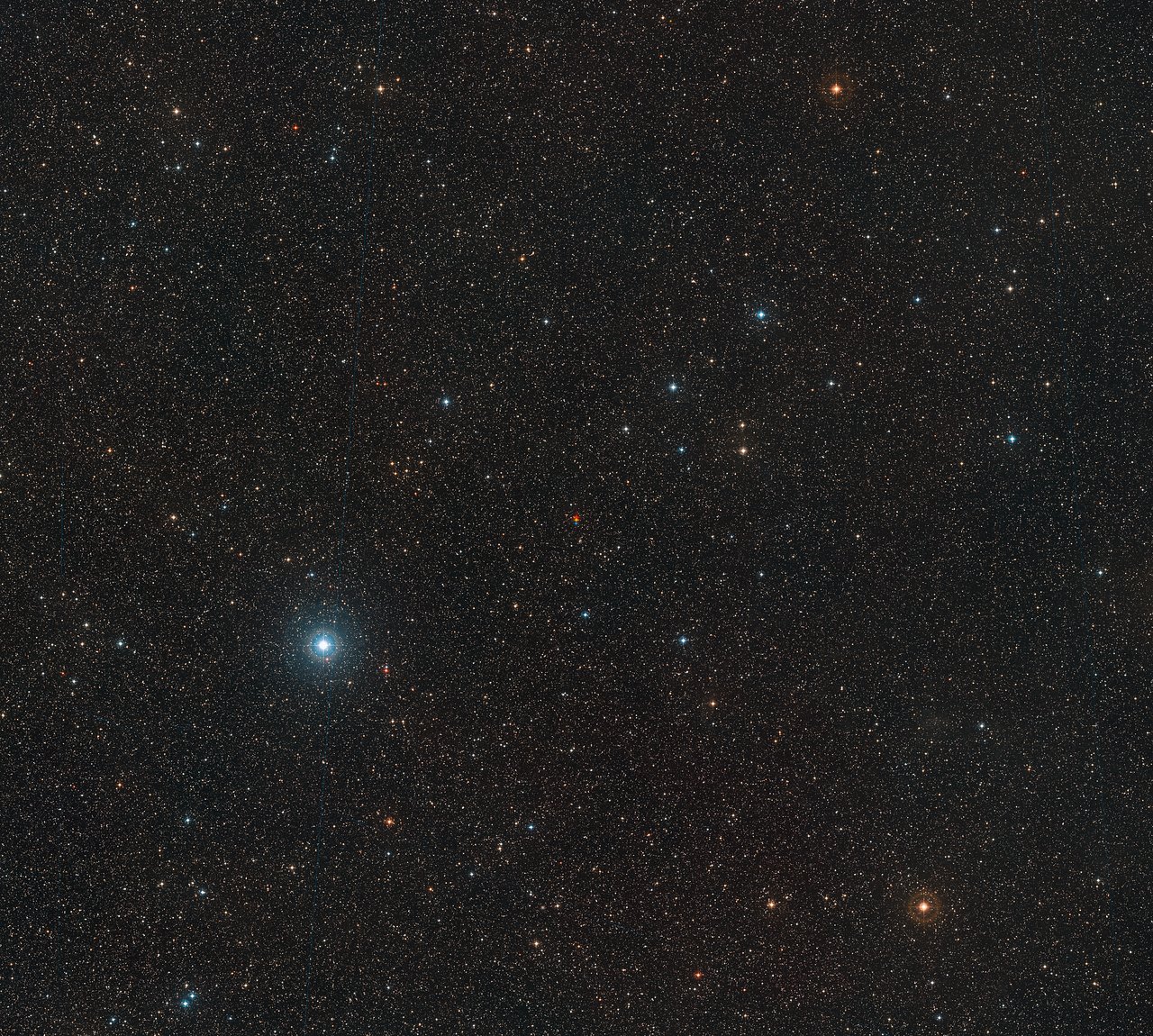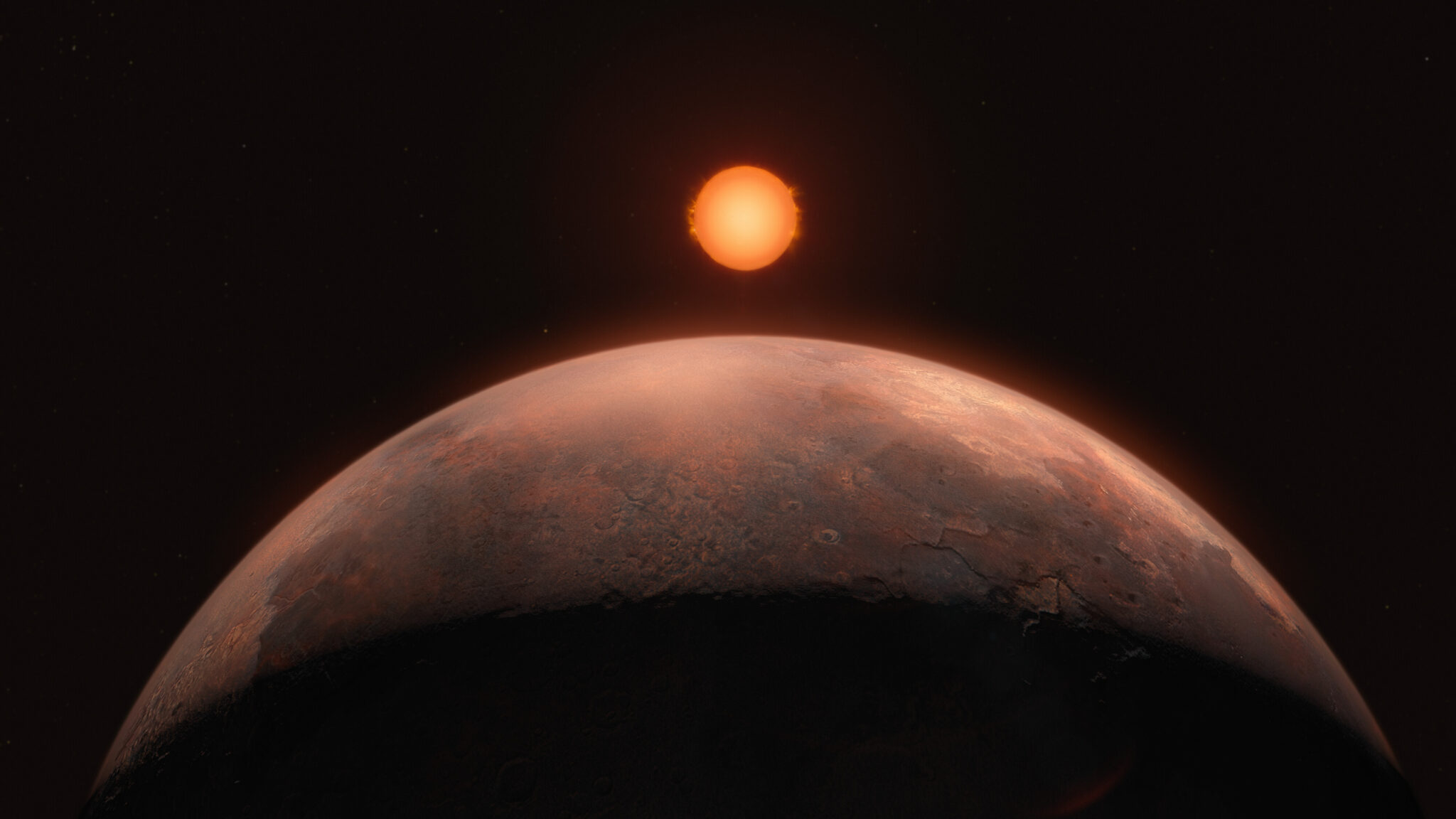Astronomers have announced the discovery of an exoplanet orbiting Barnard’s star. This is the closest single star to the Sun.
Fleeing star
Barnard’s star is located 6 light-years away from Earth (only the Alpha Centauri triple system is closer). It is a lonely red dwarf with a radius 18% of the Sun’s radius and a mass 15% of the Sun’s mass. Barnard’s star emits about 250 times less light than our home star. Therefore, despite its proximity, it cannot be seen with the naked eye in the earthly sky.

Barnard’s star has a rather curious feature. It has the highest (except for the Sun) angular velocity on the celestial sphere among known stars. Within 174 years, the star moves across the celestial sphere by 0.5° (the apparent angular size of the Sun and Moon). Therefore, it is sometimes called “fleeing”.
Scientists have long tried to find exoplanets near Barnard’s star. Back in the 1960s, astronomer Peter van de Kamp made sensational statements about the detection of deviations in its motion, which, in his opinion, were caused by the gravity of the moons orbiting around it. That’s why the target of the interstellar spacecraft Daedalus, designed in the 1970s, was chosen for this system, as it was guaranteed to have exoplanets.

However, it later became clear that van de Kamp’s calculations were wrong. Subsequently, various groups of astronomers have also made claims of finding evidence of exoplanets in the Barnard system (and some researchers have even looked for signs of intelligent life there). But they received no confirmation each time. The situation has changed only now.
Exoplanet near Barnard’s star
The discovery was made using the ESPRESSO instrument installed on ESO’s Very Large Telescope. This instrument is designed to measure the oscillations of stars caused by the gravity of exoplanets orbiting around them.

In total, astronomers observed Barnard’s star for five years. Based on their observations, they were able to detect and confirm the existence of one exoplanet. It was designated Barnard b.
Barnard b is one of the lightest exoplanets known to us. Its mass is at least half that of Venus. The exoplanet is twenty times closer to its star than Mercury is to the Sun. Its orbital period is 3.15 days, its mass is estimated to be at least half the mass of Venus. Thus, it is one of the lightest exoplanets found by astronomers. Astronomers estimate that Barnard b’s surface temperature is about 125 °C. This makes it too hot for water to exist in liquid form on the surface.
It is worth noting that astronomers have also found hints of the existence of three more exoplanets at Barnard’s star. However, additional observations with ESPRESSO will be required to confirm them.
According to ESO


